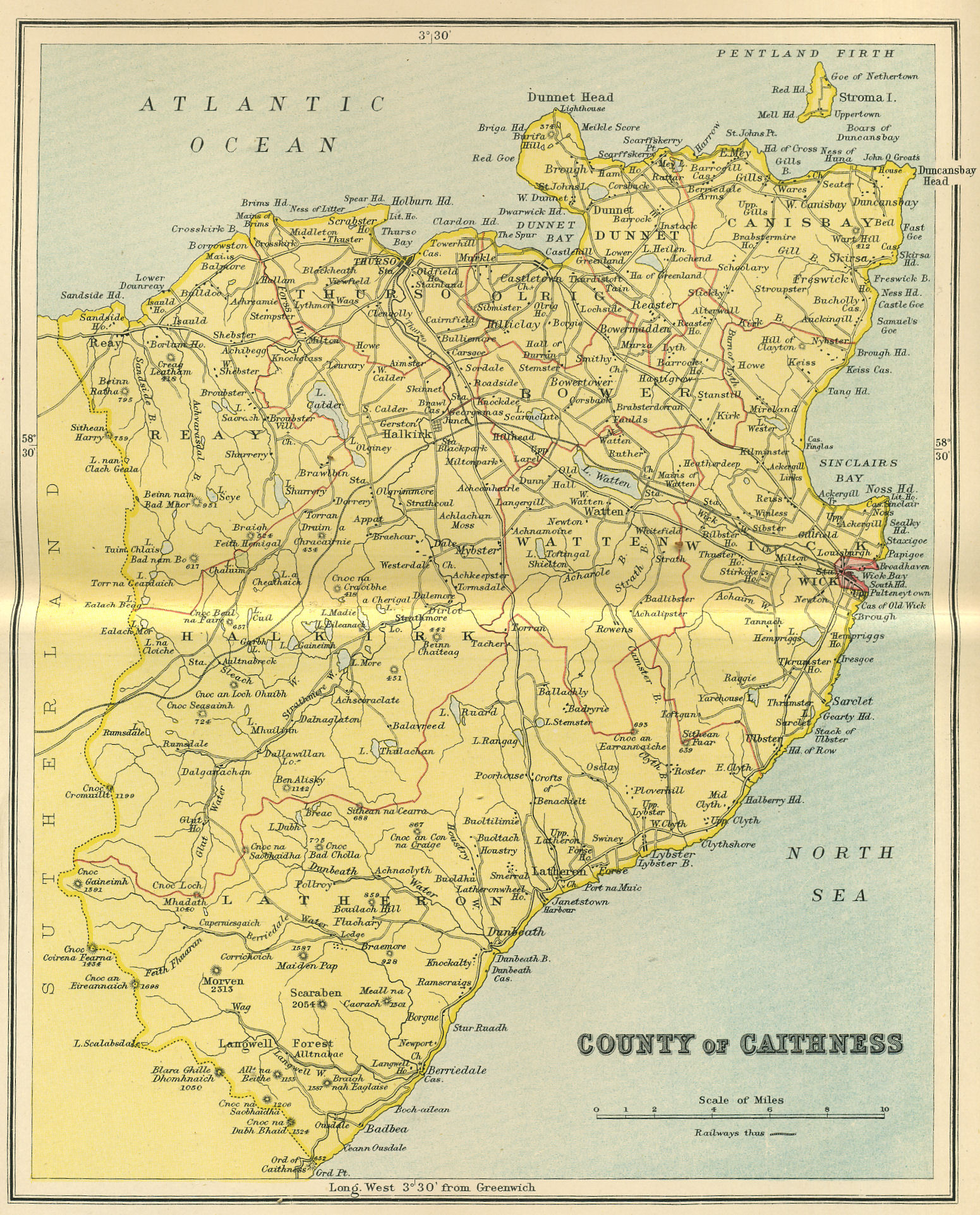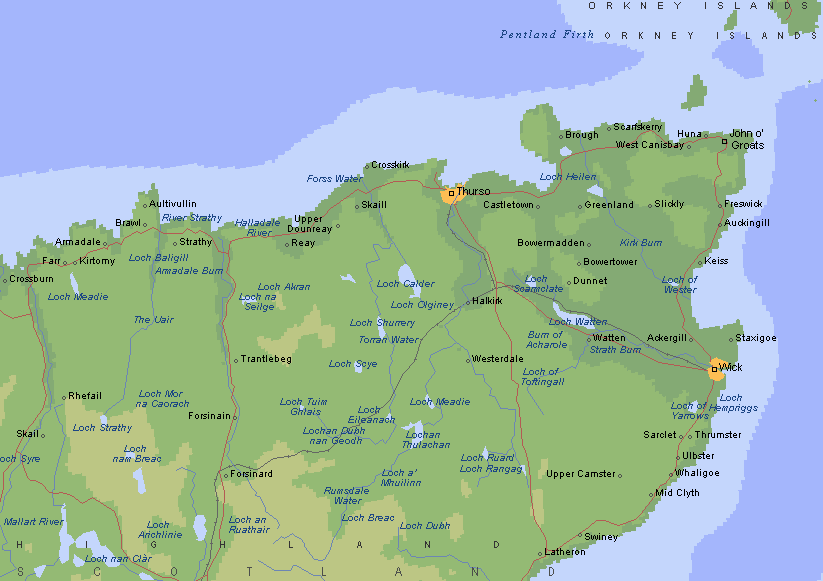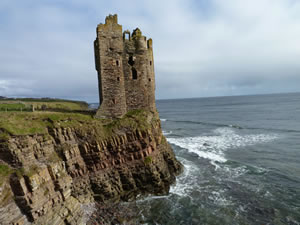Caithness
Caithness (. Schott Gael Gallaibh ) is a traditional county in the north-eastern tip of Scotland with over 25,000 inhabitants ( as of 2004) and the historic capital Wick.
Geographical location
West and south of Caithness is the old county of Sutherland. Largest city with population of 7540 was in 2004, Thurso, Wick, followed by 7010 and Halkirk with 930 inhabitants. Of importance are the ports of Scrabster near Thurso and John o 'Groats, from which ferries to Orkney.
In Dunnet Head near Thurso is the most northerly point of the British mainland, while John O'Groats marked the north- eastern point.
The county covers more than 1800 km ² and has, in contrast to other counties of the Highlands, only slightly more than 10 square kilometers inland waters.
Management
The administrative county of Caithness was disbanded in 1975 and incorporated as a district in the Scottish Highland region. For Caithness district included not only the traditional territory nor the areas of Tongue and Farr. With the replacement of the Regions in 1996 by council areas the traditional counties lost any official meaning and Caithness was directly managing the new authority Highland assumed with the area of Sutherland and Ross and Cromarty Caithness is a European NUTS3 unit ( UKM41 ).
History
Little is known about the early history of the county. The only certainty is that it was inhabited by the people of the Picts. Caithness is mainly known for its archaeological sites, such as the countless remains of brochs. These and other monuments will be seen in part by the Yarrows Archaeology Trail, which opened up the "Route of archeology in Caithness " and to year-round (see also the Wag of Forse ). To the north lies the Pentland Firth separates the Orkney archipelago of Scotland; in the Firth, the most northern point of Caithness, the Isle of Stroma. Caithness was the seat of many bishops. Since 1455 the title of Earl of Caithness in the Sinclair family is hereditary. Today's winner is the politician Malcolm Ian Sinclair, 20th Earl of Caithness.
Economy
While in the eastern part also farming is operated dominates over the majority of sheep and cattle. This sheep is for both part-time farmers ( crofters ), as well as commercial importance. In the north of the county to Dounreay, a site is a dilapidated castle, on the since the 1950 nuclear test reactors were operated. The test operation was one of the most influential economic factors in the surrounding communities. Since 1994, the former experimental reactor is being decommissioned, thereby associated with Dounreay more than 1,000 jobs were retained.
Attractions
- Achanarras quarry
- Achavanich ( Cromlech )
- Cross Kirk ( Broch )
- Caithness Broch Centre
- Cairn o 'Get
- Cairn of Embo
- The gray Cairns from Camster
- The long Cairns Cnoc Freiceadain
- Castle of Mey
- Rocky coastline at Duncansby Head (esp. Duncansby stacks)
- Freswick Castle
- Hill o ' Many Stanes ( menhirs )
- Broch of Nybster
- Ormiegill North
- Stone of Latheron
- Tullow to t'Sionnaich
- Wag of Forse
- Yarrows Broch and megalithic








